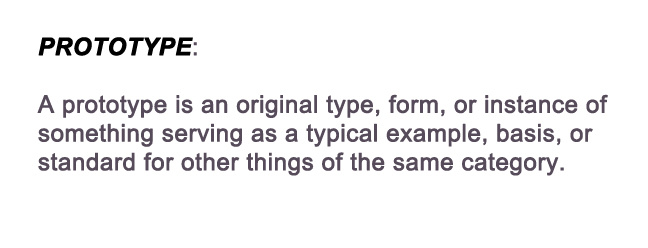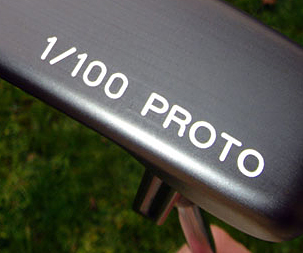
 In many fields, there is great uncertainty as to whether a new design will actually do what is desired. New designs often have unexpected problems. A prototype is often used as part of the product design process to allow engineers and designers the ability to explore design alternatives, test theories and confirm performance prior to starting production of a new product.
In many fields, there is great uncertainty as to whether a new design will actually do what is desired. New designs often have unexpected problems. A prototype is often used as part of the product design process to allow engineers and designers the ability to explore design alternatives, test theories and confirm performance prior to starting production of a new product.
Engineers use their experience to tailor the prototype according to the specific unknowns still present in the intended design. For example, some prototypes are used to confirm and verify consumer interest in a proposed design whereas other prototypes will attempt to verify the performance or suitability of a specific design approach.
In general, an iterative series of prototypes will be designed, constructed and tested as the final design emerges and is prepared for production. With rare exceptions, multiple iterations of prototypes are used to progressively refine the design. A common strategy is to design, test, evaluate and then modify the design based on analysis of the prototype.

Below are examples of how the word Prototype should be used:
Proof-of-Principle Prototype (Model) (also called a breadboard). This type of prototype is used to test some aspect of the intended design without attempting to exactly simulate the visual appearance, choice of materials or intended manufacturing process. Such prototypes can be used to “prove” out a potential design approach such as range of motion, mechanics, sensors, architecture, etc. These types of models are often used to identify which design options will not work, or where further development and testing is necessary.
Form Study Prototype (Model). This type of prototype will allow designers to explore the basic size, look and feel of a product without simulating the actual function or exact visual appearance of the product. They can help assess ergonomic factors and provide insight into visual aspects of the product’s final form. Form Study Prototypes are often hand-carved or machined models from easily sculpted, inexpensive materials (e.g., urethane foam), without representing the intended color, finish, or texture. Due to the materials used, these models are intended for internal decision making and are generally not durable enough or suitable for use by representative users or consumers.
Visual Prototype (Model) will capture the intended design aesthetic and simulate the appearance, color and surface textures of the intended product but will not actually embody the function(s) of the final product. These models will be suitable for use in market research, executive reviews and approval, packaging mock-ups, and photo shoots for sales literature.
Functional Prototype (Model) (also called a working prototype) will, to the greatest extent practical, attempt to simulate the final design, aesthetics, materials and functionality of the intended design. The functional prototype may be reduced in size (scaled down) in order to reduce costs. The construction of a fully working full-scale prototype and the ultimate test of concept, is the engineers’ final check for design flaws and allows last-minute improvements to be made before larger production runs are ordered.

[poll id=”9″]

